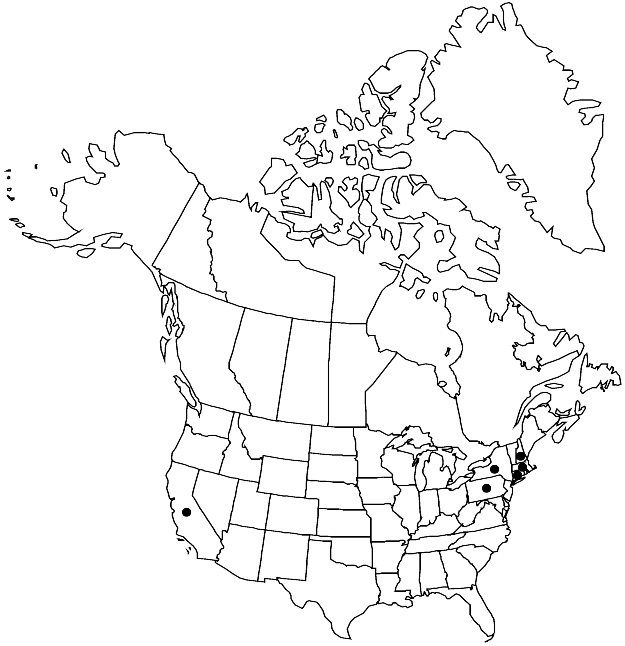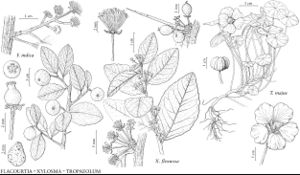Tropaeolum majus
Sp. Pl. 1: 345. 1753.
Plants trailing, 15–100(–250) cm; glabrous or glabrate. Leaves: petiole 5–25 cm; blade with ca. 9 veins radiating from petiole, 3–10(–12) cm diam., abaxial surface usually papillose. Pedicels 6–13(–18) cm. Flowers 2.5–6 cm diam.; sepals light brown, oblong-lanceolate, 1.5–2 × 0.5–0.7 cm; spur straight or slightly curved, 2.5–3.5 cm; petals yellow, orange, purple, maroon, creamy white, or varicolored, mostly rounded, apex sometimes acuminate or emarginate, proximal 3 petals 2 × 2 cm, distal 2 petals usually entire, 2.5–5 × 1–1.8 cm, claw to 1.5 cm, claw margin deeply fringed; stamens 0.5–0.6 mm; anthers 0.5 mm; style 0.5–0.6 cm; stigmas 0.6–0.9 mm. Fruits oblate, 1.5–2 cm diam. Seeds 5–8 mm diam. 2n = 28.
Phenology: Flowering (May-)Jun–Oct, fruiting Jul–Oct.
Habitat: Disturbed roadsides, waste places, coastal bluffs, upper edges of beaches
Elevation: 0-200 m
Distribution

Introduced; Calif., Conn., Mass., N.H., N.Y., Pa., South America, introduced also in Europe, Asia, Africa, Australia.
Discussion
Tropaeolum majus is frequently cultivated and often escapes; thoroughly naturalized and an invasive in coastal California, it occurs as a waif elsewhere.
Tropaeolum majus is often planted in gardens, and dozens of cultivars are available in the horticultural trade. Leaves of this plant have a peppery flavor and can be added to salads and sandwiches, and the flowers can be used to decorate salads and other dishes. The foliage is rich in vitamin C, and the plant also has diuretic and antibacterial properties. The plant is also used to treat wounds and infections of the urinary tract, and for problems associated with the respiratory tract (e.g., bronchitis and flu). Benzyl isothiocyanate, which can cause irritation, is responsible for the antibiotic action. The common name, Indian cress, refers to its cultivation in India.
Tropaeolum minus Linnaeus, T. peltophorum Bentham, T. peregrinum Linnaeus, and T. tuberosum Ruiz & Pavón also are cultivated in North America, but none is reported escaped. Tropaeolum tuberosum is the source of the root crop añu (ysaño), an important staple in the Andes.
Selected References
None.
